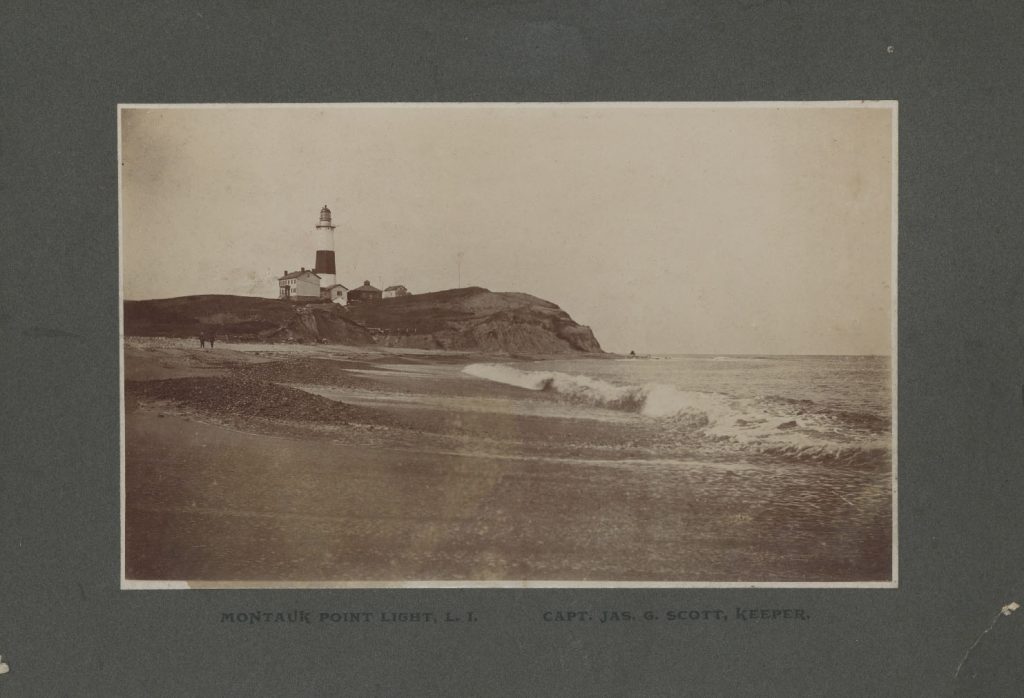
In late October of 1903, a young couple joined hands in marriage atop the lighthouse tower. Their choice of the venue arose from their happenstance meeting there, when Evelyn Cook was visiting her aunt and uncle, Margaret and Captain James G. Scott, who was the lighthouse keeper living there at the time. The groom was Charles O. Gould, whose father had been born at the lighthouse when his own father served as lighthouse keeper some decades earlier.
“It is seldom that a wedding transpires on Montauk. It is more seldom that one occurs in the lighthouse,” reported the Sag Harbor Express on November 5, 1903.
The lighthouse is now a popular destination wedding venue, but in 1903, the wedding of Evelyn Cook and Charles O. Gould was the first one in seventy-five years.
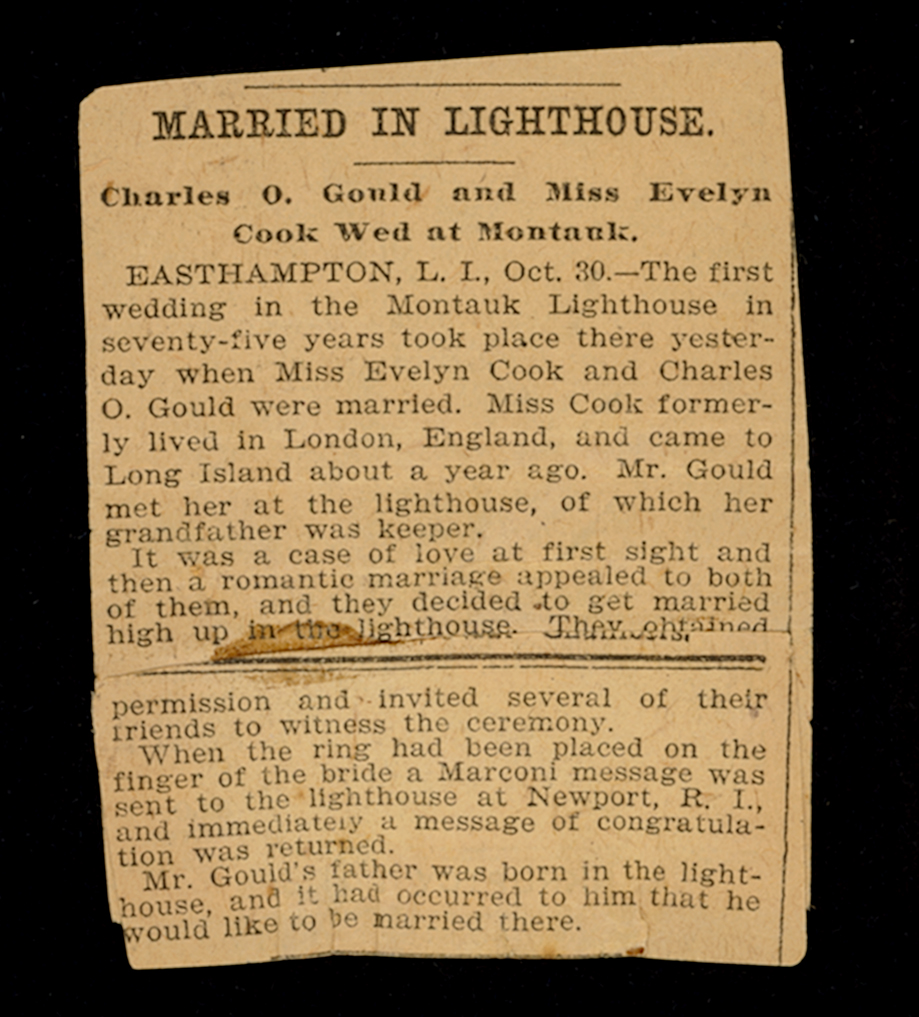
The wedding, though small, was quite the affair and made its way into several local newspapers for its exotic location and the couple’s coincidental connection. “It was the son’s [Charles] often-expressed wish that he be married there. The fact that he first met Miss Cook there was an additional reason for choosing the quaint place for the ceremony,” recounts a newspaper clipping in the library’s archive.
Evelyn Cook, formerly of London, moved to the States at the proposition of her aunt Margaret Scott. Margaret had been living at the lighthouse for the past fifteen years, where her husband, Captain James G. Scott served as lighthouse keeper from 1885 to 1910.
“I am very near the broad Atlantic Ocean,” wrote Margaret in a letter dated 1901, “it is very beautiful here in summer and we have a great many visitors here to see the light…We are not quite alone, though it is rather dreary in winter.”
At the turn of the 20th century, Margaret wrote letters to connect with family members abroad. After hearing that her sister Anna (Evelyn’s mother) had passed some eight years before, she took an interest in Evelyn and continued to write a series of letters over the fall and winter of 1901, preserved in the Montauk Library archives.
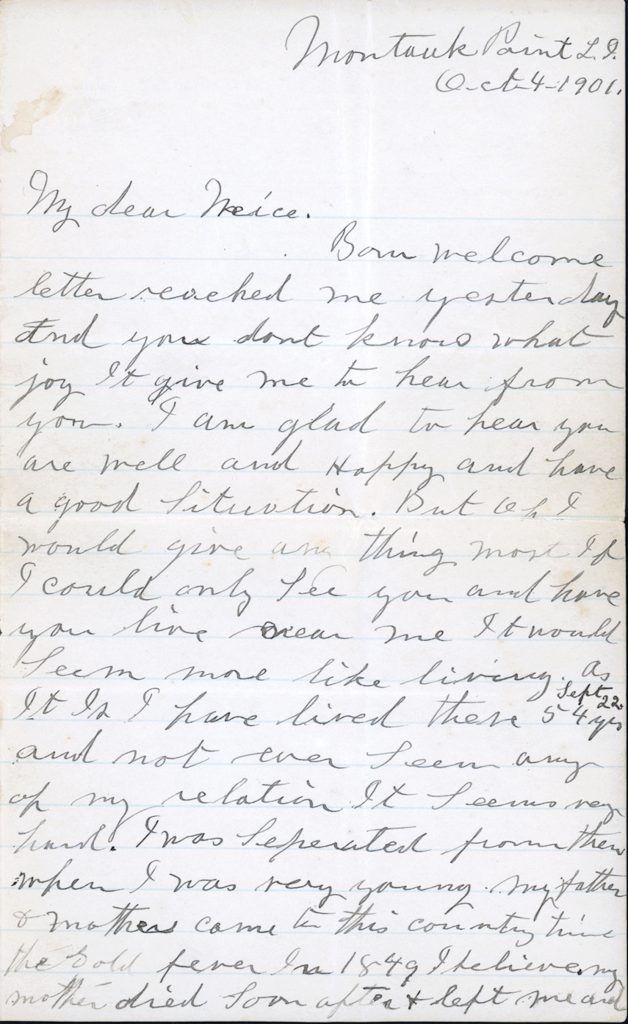
Margaret came to this country from England during the “gold fever era 1849” with her parents and baby brother. Margaret’s mother died shortly following their arrival, and her father “took a steamer for Panama, he was an engineer, and I have never heard from him since.” She did not learn that she had a sister living in England until she was seventeen.
She lived with another family for twelve years before marrying James G. Scott and settling in Miller Place, Long Island. In the letters, she references her loneliness growing up, her longing for belonging with family, and why she feels such an attachment to her niece, whom she has not met in person yet.
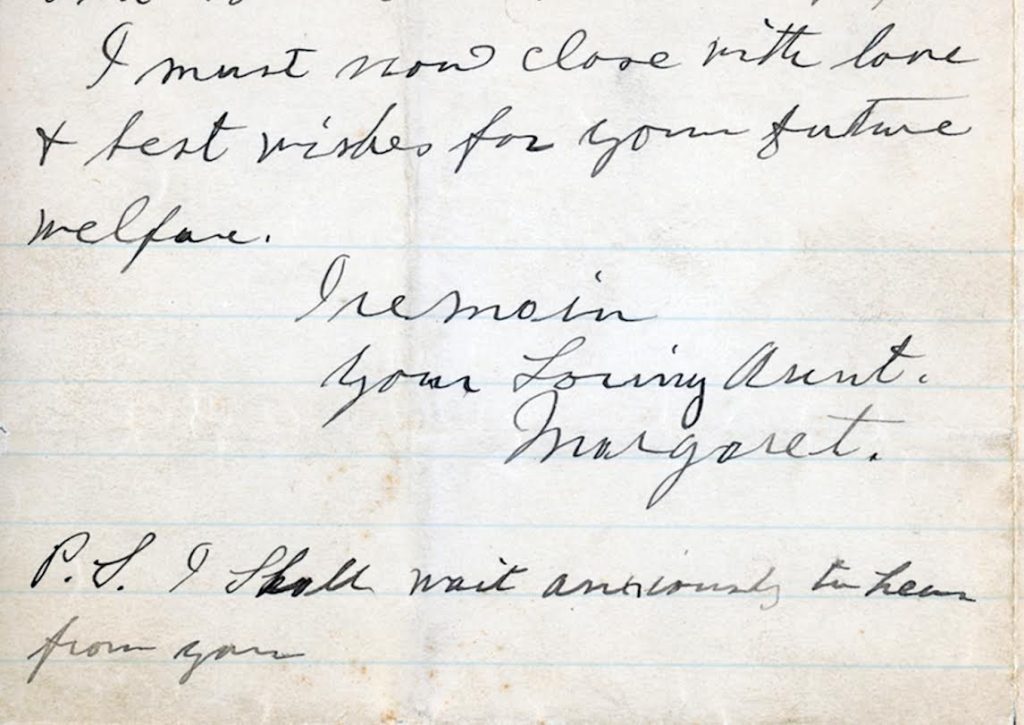
“I believe that I am the nearest relative you have on your mother’s side, and I feel quite an interest in you,” she wrote, “I am anxious for you to write and would like to see you very much, if you could come to this country, it would make it very pleasant for me, as I have lost all six children, but one daughter, who is married.”
The isolation of living at the lighthouse in winter might have added to her longing and need to connect with her niece. Through the correspondence, we learn the ages and personalities of her children, whom she lost:
Anna, named after Evelyn’s mother, died at the age of 16. “She looked more like your mother than she did me.” Two other daughters, Nellie and Josephine, perished at ages 3 and 5 months. Two sons, John and Walter, also passed. Walter’s accidental death by drowning in Money Pond brought members from the community and the lifesaving station together to recover his body from the reeds.
Her only living daughter, Emily, was living in East Hampton with her husband and two children, aged 3 and 5. The grandchildren brought Margaret much joy. Her grandson “loves to come and stay in grandma’s light house home, he calls it.”
Margaret offered to pay for Evelyn’s steamer fare to New York and train from the city out to Montauk. Though the details of her journey to the States are not documented in the collection, the saved newspaper articles about the wedding help complete the story of Evelyn’s reunion with her aunt and uncle at the lighthouse, and the serendipitous “it was a case of love at first sight” encounter with her husband-to-be.
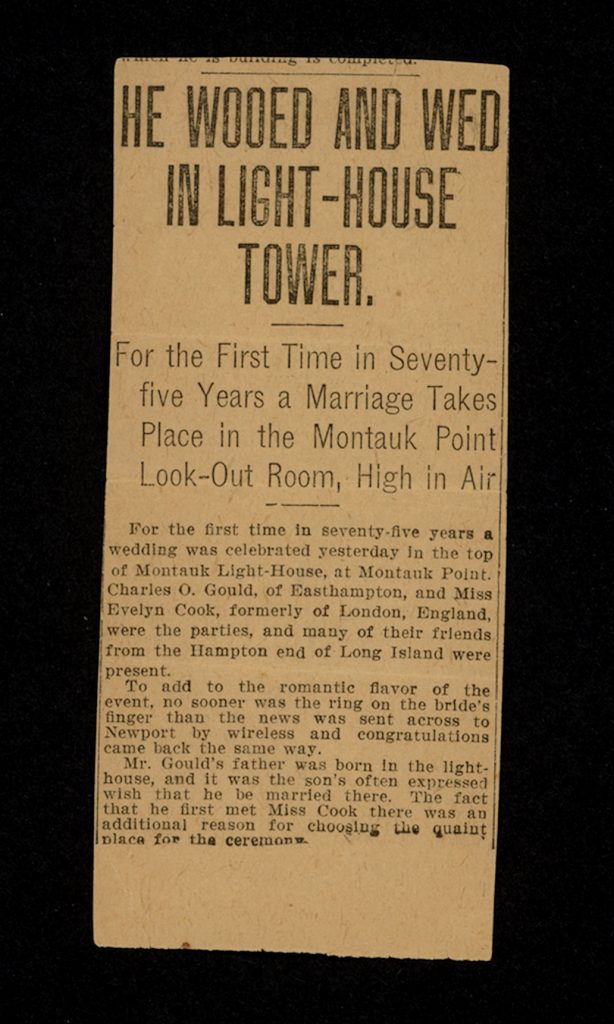
You can follow along on this intimate family story through this collection of letters and newspaper clippings, which are now accessible online.

Reply or Comment